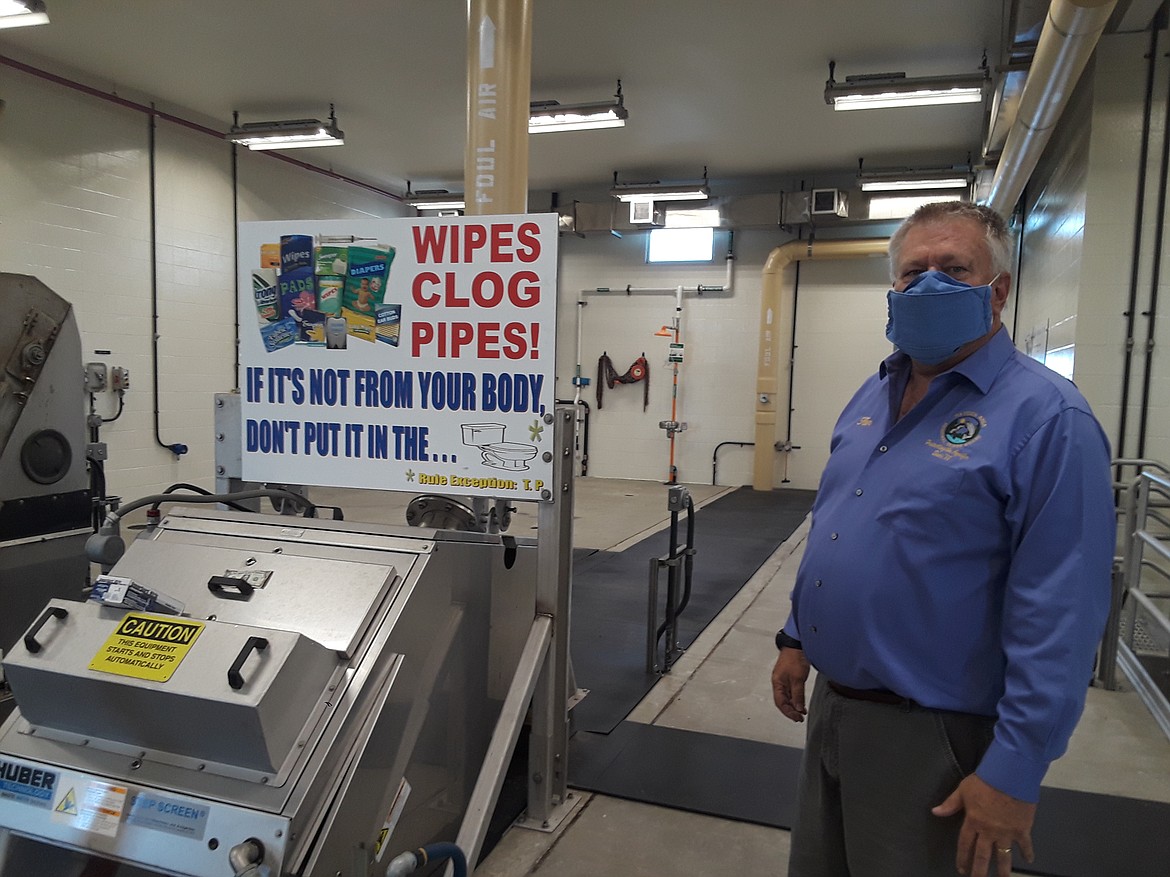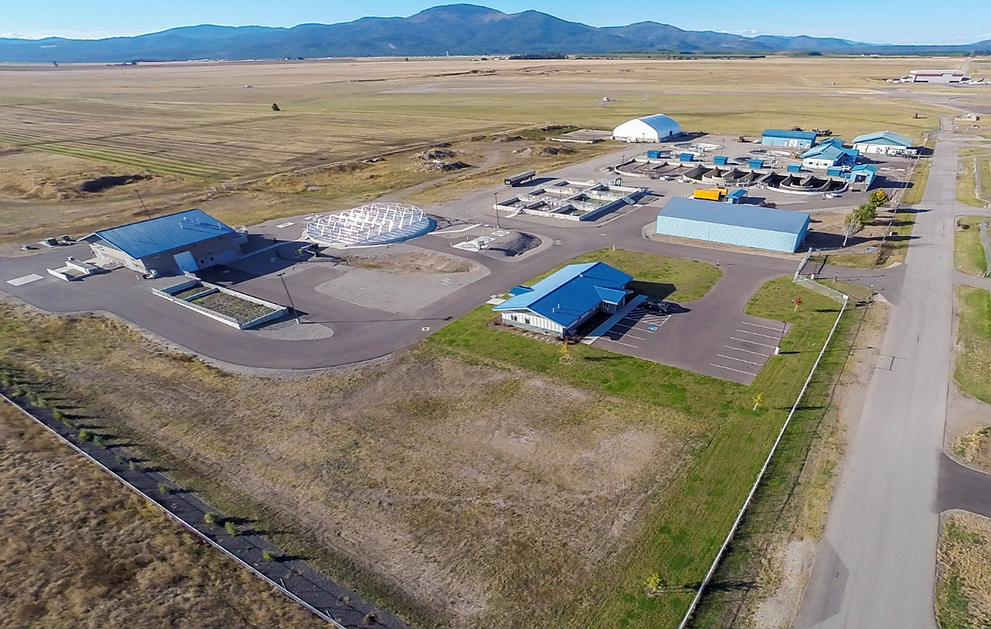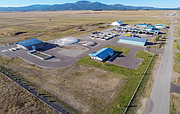'If it's not from your body, don't put it in the potty'
Headline apologies to those who read the newspaper each morning as part of their breakfast routines, but there’s really nothing that better illustrates Ken Windram’s matter-of-fact approach to his job.
“Every morning, people wake up and do their business,” the system administrator for the regional wastewater treatment plant said moments before giving The Press a tour of the Atlas Road campus. “And every morning, we get a tidal wave of it coming our way.”
"It” is the 1.1 million gallons of sewage that flows into the Hayden Area Regional Sewer Board’s plant every day. It’s a facility Windram said is crucial to maintaining the welfare of the area’s most important resource: its natural health.
“Without this site, and other sites like it in Post Falls and Coeur d’Alene, you’d have an open sewer that drains right into the Spokane River,” he said.
That responsibility also draws strict monitoring and, at times, scrutiny, as governments and watchdog groups often measure the overall health of aquifers, ground soil and water quality by contaminants found at facilities like the Atlas Road hub. But a report issued earlier this week from the Idaho Conservation League gave the Hayden, Post Falls and Coeur d’Alene plants clean bills of health.
“Are these three sites following proper procedure?” asked Austin Walkins, climate campaign coordinator for the Idaho Conservation League. “I think their records reflect that they are.”
The Idaho Conservation League released its fourth annual study of federal violations of the Clean Water Act this week. The study examines violations over a three-year period to gauge how closely — or not — sewage treatment plants follow federal guidelines to keep contaminants out of its water. While a quarter of Idaho’s 112 facilities went three years without a single violation, some racked up triple-digit violations, with the plant in Driggs pulling in 118 violations between 2017 and 2019.
The Coeur d’Alene plant took in only eight violations over that span.
“Violations happen,” Walkins said. “What’s concerning is when you see violations rack up into hundreds of issues. Facilities that consistently have records of over 50 violations over a three-year period — those are the ones that really catch our eye. So of course, we strive for everyone to have no violations, and while I think the city would tell you they always want to improve, having only eight is not cause for concern.”
Hayden and Post Falls each garnered only one violation apiece, both for having too much zinc.
“You know those pellets they put in Port-A-Potties?” Windram said. “We think somebody might’ve dumped those down the drain somewhere.”
Of the 1,606 violations handed down by federal and state regulators to Idaho sewage plants over the past three years, almost half were issued to 10 plants, which urged Walkins to commend the three Kootenai County plants for keeping things clean, so to speak.
“It’s always important to recognize facilities with few-to-no violations,” he said. “Especially when you look through a three-year lens, and you see those same plants coming away with almost no violations, it’s important to realize that doesn’t happen by accident.”
Coeur d’Alene wasn’t found with zinc in its water, but a pollutant discovered from its water gave the ICL a moment of pause, primarily because of the bodies of water in and around the city.
“Biological Oxygen Demand,” Walkins said. “There’s a reason why that’s a concern. It’s basically a contaminant that’s absorbing oxygen. So the oxygen goes to that, rather than to the fish and other aquatic wildlife in the area.”
But overall, Walkins said those higher levels likely represent outlier situations — such as spills on roadways or other outlier events — rather than patterns of non-compliance.
“We use this report as a first screen,” he said. “We’re looking for those systemic issues where problems are arising year after year and not getting corrected, rather than those one-offs.”
Troy Tymesen, city administrator for Coeur d’Alene, said that while investing in the city plant’s design and construction is a big part of the facility’s success, the operational side begins and ends with the right staffing.
“The people who work there day-in and day-out, they do a very good job, and they take it pretty seriously," Tymesen said. "When it comes to keeping compliant, there is very little room for error, and the people who collect and treat our wastewater are diligent in their attention to detail.”
Standing on a metal walkway over the rushing wastewater in Hayden, as the biosolids were separated from liquids, Windram echoed Tymesen’s sentiment.
“What makes this operation work for everyone is our environmental team,” he said. “Having the right team in place keeps this place running.”
The Atlas Road campus shines and shimmers, its pipes reflecting off Windram’s image as he passes during his tour. The floors sparkle. Everything about the plant, despite the sewage rushing through its bowels, reminds of something strangely clean. Everything, that is, but the smell.
“What smell?” the administrator with 40 years experience in the industry jokingly asked.
The Hayden plant — along with its sister plants — removes sand, garbage and debris, leaving behind an organic soup for bacteria to consume. Clean water is then separated from the bacteria, cleaned and disinfected for re-use and irrigation. The bacteria will eventually become biosolids for agriculture. It’s a process that Windram said will tighten even further with the installation of new membranes as part of its future upgrades, something he said would further help maintain a healthy sewer system. But the best way Windram said locals can protect the environment, from his perspective, is to stay mindful of what goes down the drain.
“Just remember,” he said for the third time that afternoon as the tour concluded, “‘If it’s not from your body, don’t put it in the potty.’”



